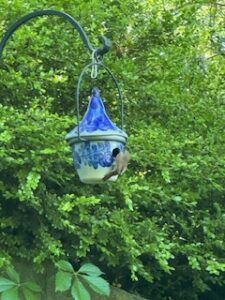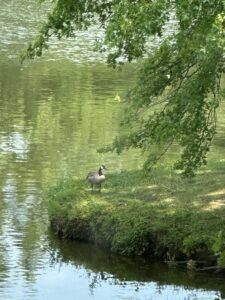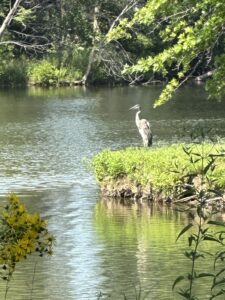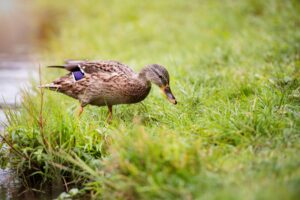What is going on here at our house?


Normally from mid-July until mid-September, there is not as much going on in our yard as in the previous spring and summer months, but this year is an exception. We continue to have a good number of birds at the feeders and bird baths. I am not sure how many House Finch families we had this summer, but my guess it is a record breaking year. Right now they are eating us out of house and home! You can watch them on the safflower feeder and almost see the level of seed drop as they munch away. They are also communal bathers – with each other and with anyone else who lands on the rim.
Most birds are molting right now – especially ducks, geese, and swans. If you live near a pond or small lake and these birds are present, you will probably notice copious amounts of feathers along the shores. These birds now spend much of their day preening and they all excel in pulling out loosened feathers. When I walk through our yard, I see scattered feathers here and there – the Blue Jay feathers are often easy to see. Their tail and wing feathers are good-sized for songbirds. Grackle and woodpecker feathers are also fairly easy to see when they are scattered over the ground.
When birds are molting, they are also often much more quiet. Our exceptions here in our yard are two male Northern Cardinals who are still whistling quite a bit – most often in late afternoon. And we have at least two robins who are singing. We do hear birds calling from time to time, but the long periods of singing – most especially the full dawn chorus – are now more rare. Birds call throughout the fall and winter, and some like the Carolina Wren and White-throated Sparrow will even sing – especially on warmer, sunnier winter days. But here in central Illinois, we will not have the prolonged periods of singing until next spring. Something to look forward to!


Some species of songbirds begin to migrate in August. As I explained in a previous blog, our Baltimore Orioles are long gone – ours start leaving in mid-July which is a change. Our Rose-breasted Grosbeaks, Brown Thrashers, and Gray Catbirds are also gone. It is always hard to tell when the Rose-breasted Grosbeaks actually leave. Most will complete their molt before leaving, and they are very quiet during this time. They do not call or sing and will perch for long periods of time high up in big trees so with all the leaves, you cannot see them. They also come to feeders less often – generally at sunrise and sunset. They eat and quietly leave. So it can be hard to tell when they actually leave, but we have not seen any in our neighborhood for almost two weeks, so ours are gone.
Our flock of Canada Geese has not returned to our small lake. Then one was all alone for several weeks. Now we have two – and you can see them from time to time on the ground under the feeders. But the resident flock we have always had of at least 20 – and often closer to 50 – is gone. We have checked from time to time at the 4 large lakes near us and although they do have Canada Geese, in our estimation, the numbers are way down. And there were only a few families total on all 4 lakes – that is a big change. We will see if this continues next year.

We have always had Great Blue Herons on our small lake, but fewer this year. We have normally had 5-6, but this year we had 2 and occasionally 3. Another change. We did have that terrible storm rip through here last summer with big trees down and much roof damage everywhere. I do think this greatly affected the Rose-breasted Grosbeaks as none were in our neighborhood from the day after that storm until this past spring. And after that storm is when the population of Great Blue Herons dropped to about half. It will be interesting to see what happens next spring.

From time to time there are 3 Mallards on the ground under the feeders. We think this is a female and 2 of her young from this year. We never see the male. Even though these are older juveniles, she is quite the disciplinarian and will use her bill to give each a good pinch on its behind from time to time. If all 3 are together and you look closely, you will see she is slightly larger. And if you watch their behavior for some time, you will see she is dominant.

